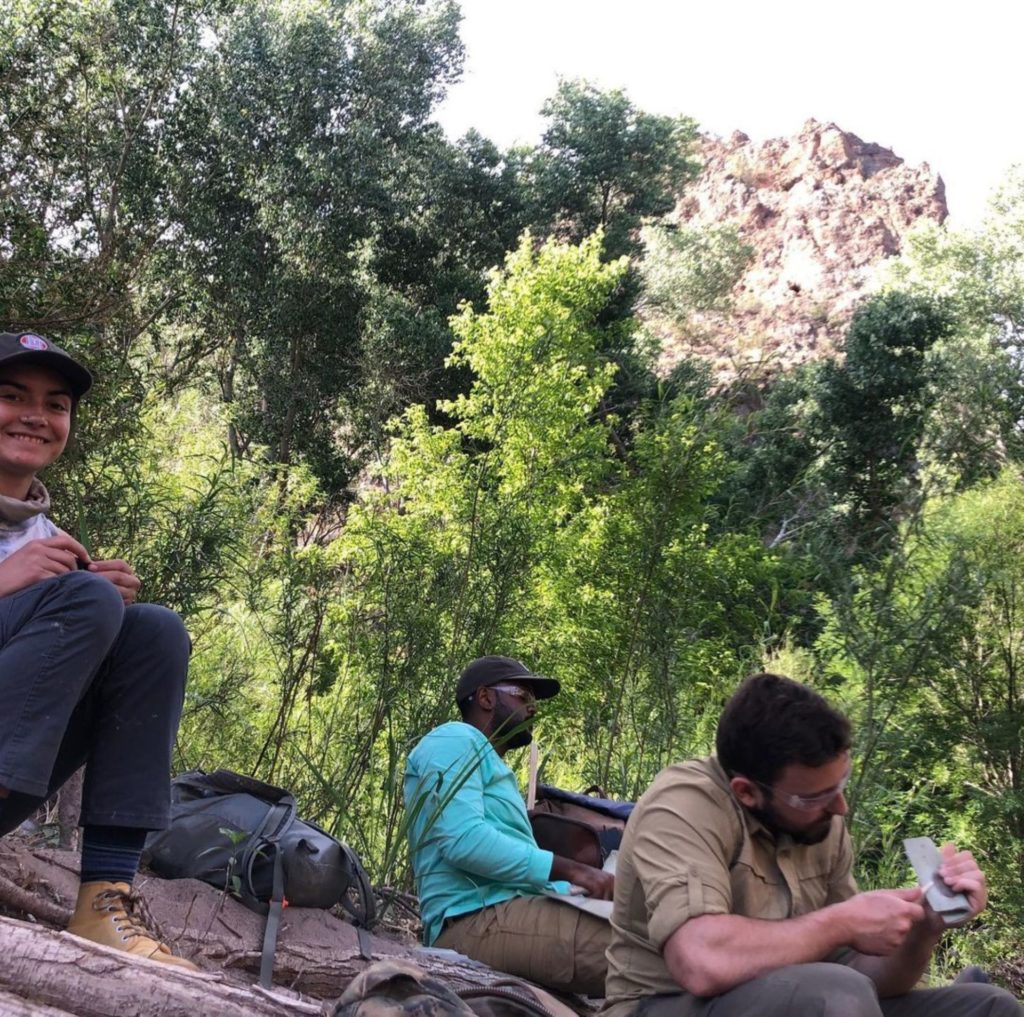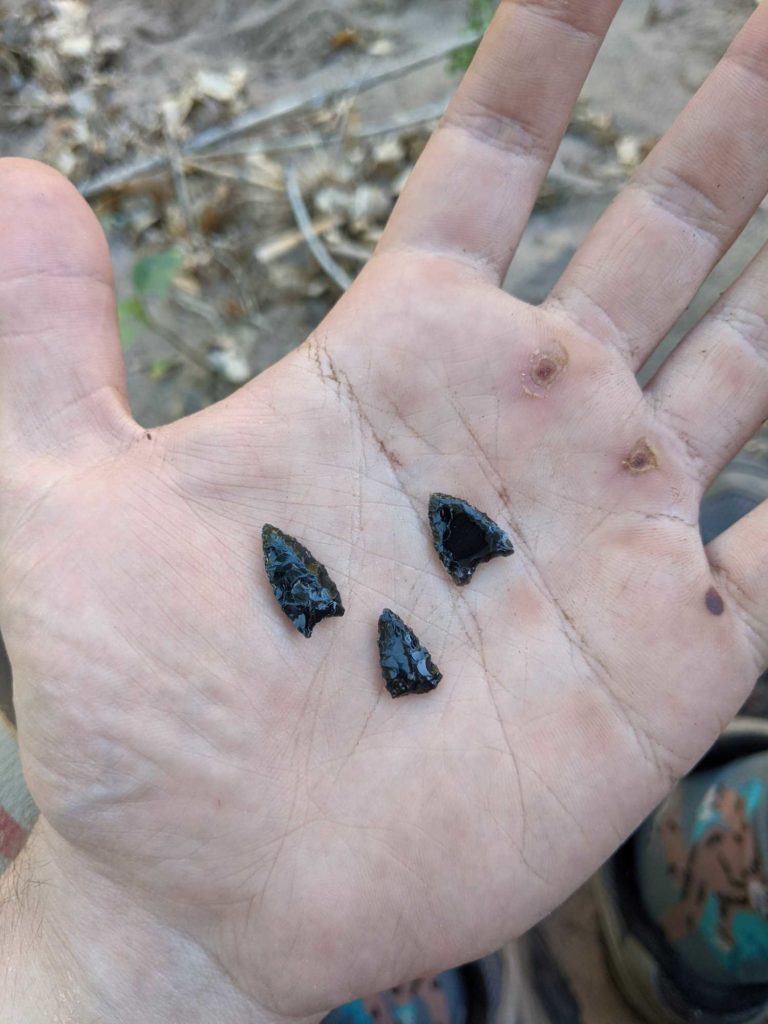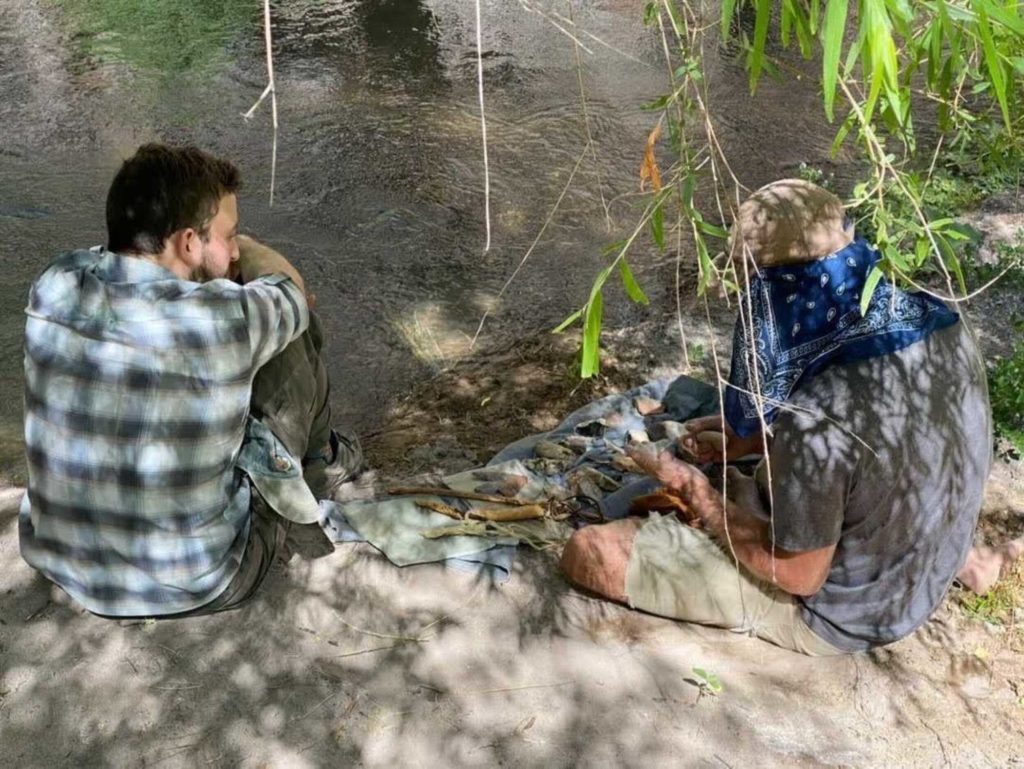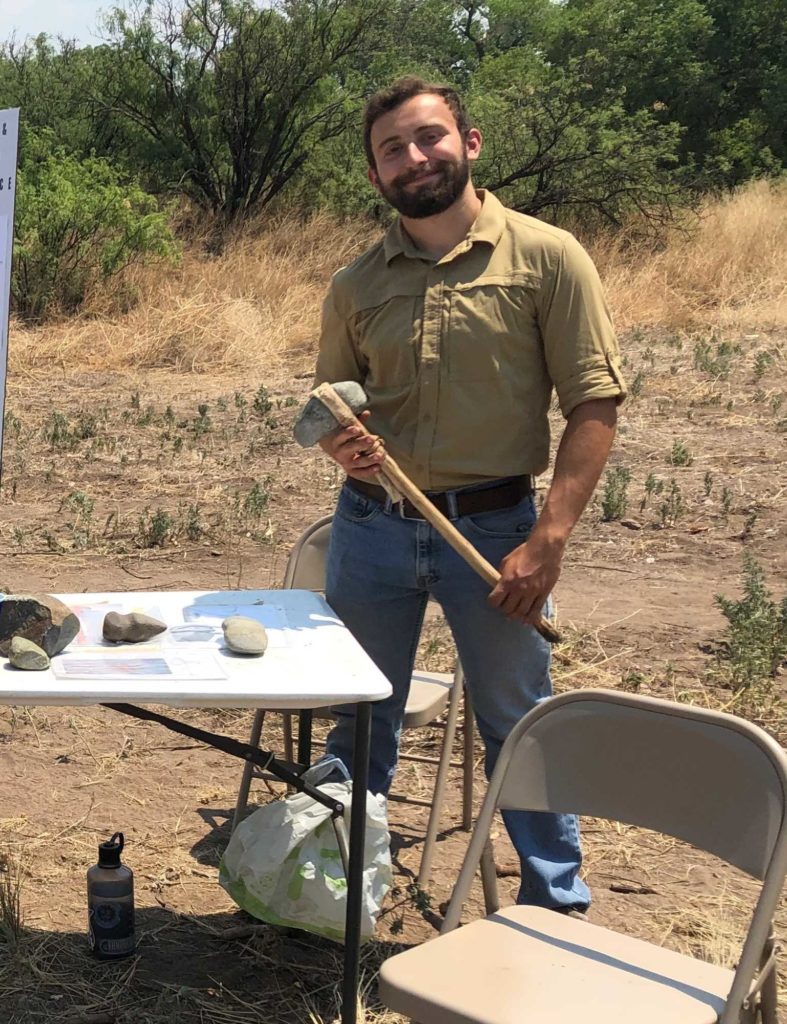- Home
- >
- Preservation Archaeology Blog
- >
- Toolmaking and the Power of Being Taught
(July 19, 2021)—I have spent the last eight months, on and off, trying to teach myself how to flintknap without really getting anywhere. After less than half a day of working with Archaeology Southwest’s resident experimental archaeologist, Allen Denoyer, I was already flaking (small and rudimentary) arrowheads. Learning how to make stone tools has strengthened my appreciation for the power of learning something from someone and my admiration of those who had to figure it out themselves.

Allen taught us things like how to differentiate the matte-skinned, high-quality obsidian from the shiny, low-quality duds so we’d know what to knap and what not to. Had I gone out and collected obsidian myself, there’s a good chance I would’ve taken my eye out with one of the many beautiful but deadly “bombs.” I’m certain plenty of the first people to try knapping obsidian did.

The same goes for finding material to make a ground stone axe for my outreach project. Left to my own devices, I likely would have picked out a dozen different rocks I thought looked good only for them to be un-peckable or shatter halfway through the process. Fortunately, I had Allen to show me the qualities to look for in stone that make for good axes, and we were able to find a piece that worked perfectly the first time around.
The amount of collective knowledge we now have about tool production allows people like me to learn the basics in a matter of days or weeks. We didn’t always have that knowledge, however, and in being taught how to do things like flintknapping, ground stone pecking, and wood carving, I have developed an even greater level of respect for the people of millennia past who had to piece it together themselves. The people who first developed crafts like flintknapping, ground stone working, or wood carving didn’t have teachers to show them what to do, what not to, or how. The knowledge we have today was gained because those people submitted themselves to a tedious and difficult process of trial and error.

We cannot, of course, go back in time to thank them for doing this, but we can remind ourselves, when we look at an artifact, to really take our time to appreciate everything that went into making that piece of stone what it is.

2 thoughts on “Toolmaking and the Power of Being Taught”
Comments are closed.
Nice work!
Hence apprenticing oneself to a master in a variety of fields.
Congratulations on the successful manufacture of pretty and useful tools . Now for fletching……..